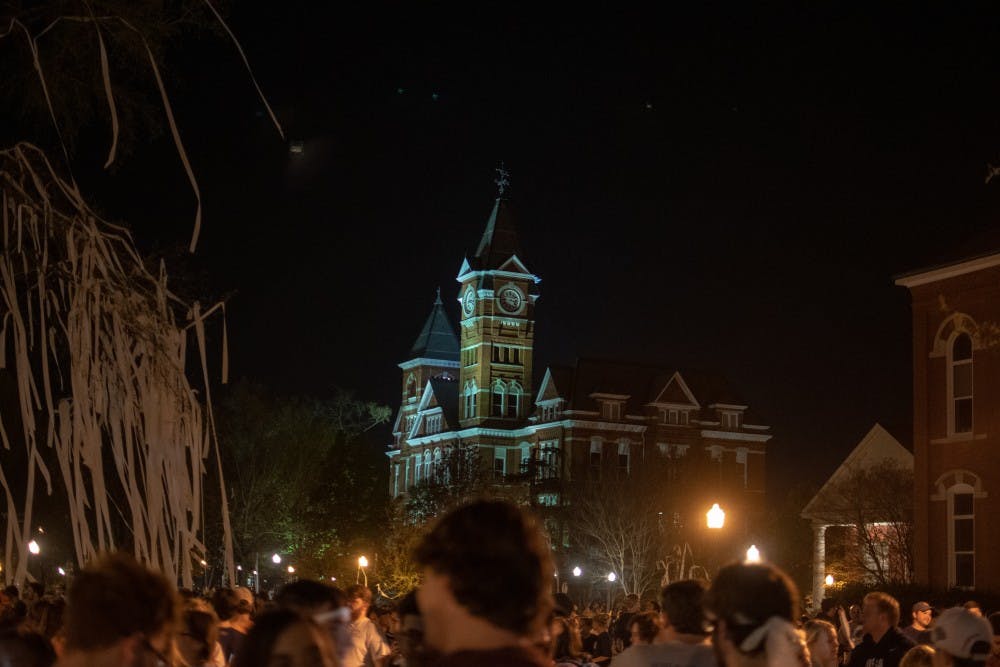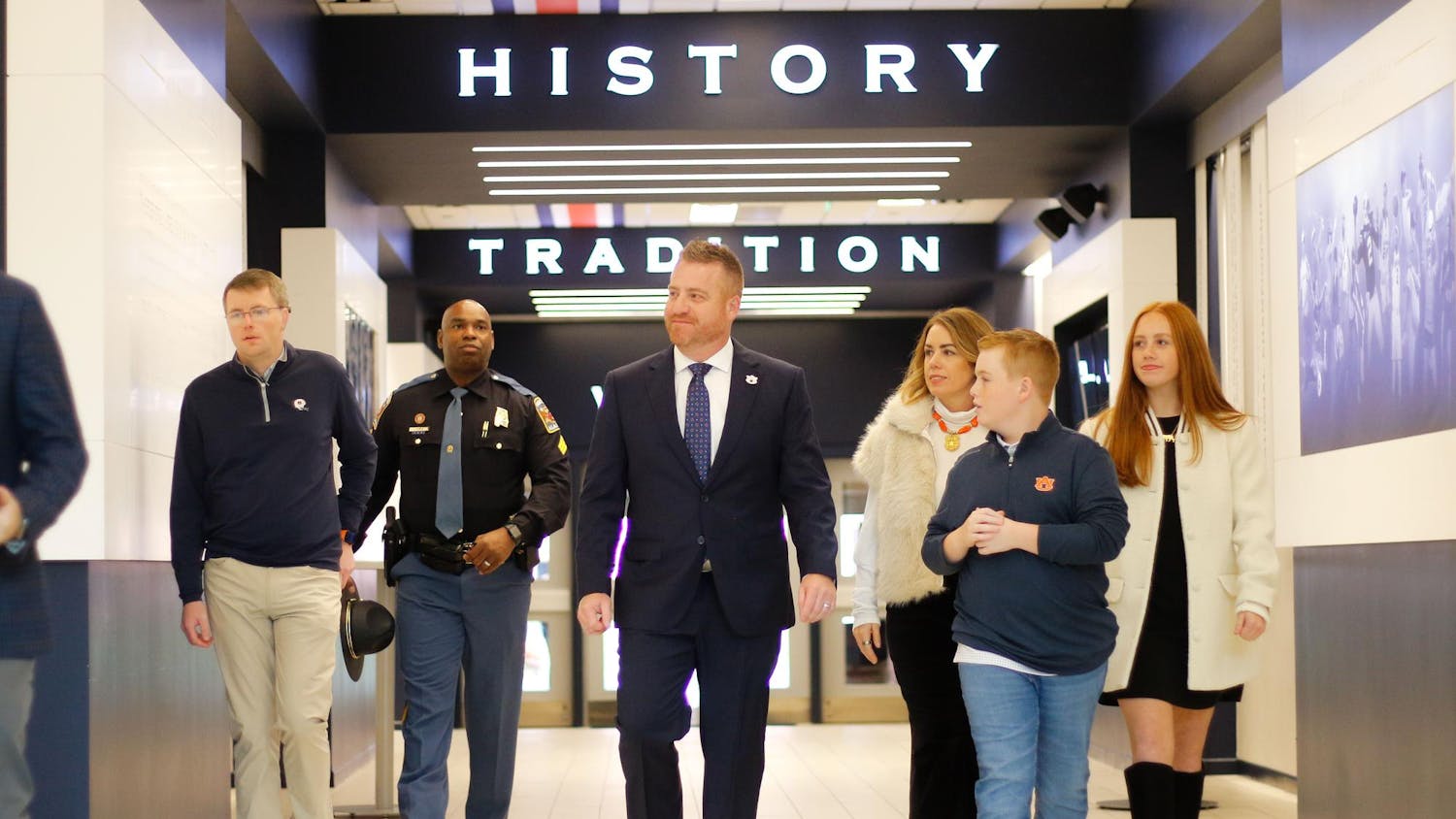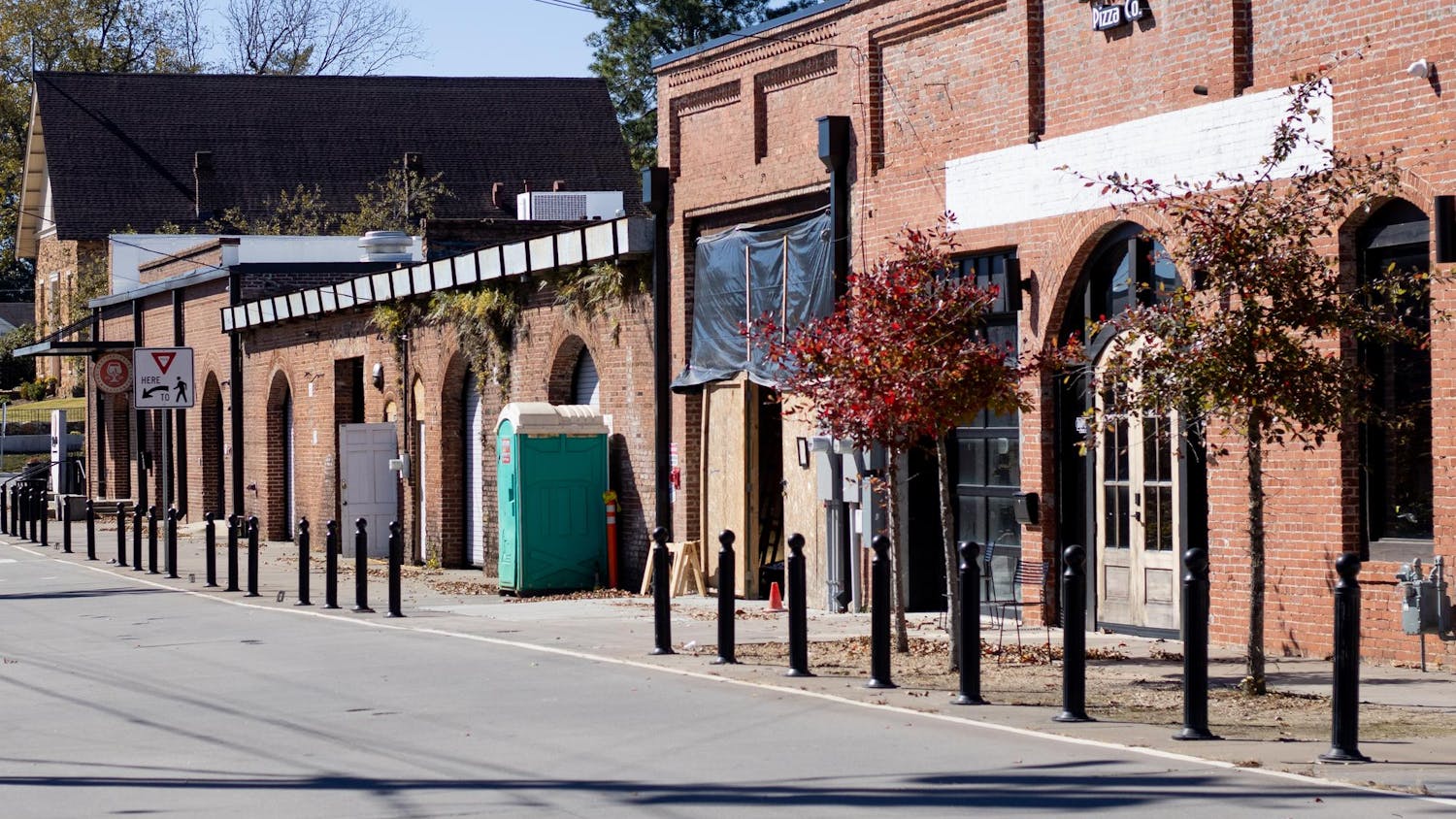Auburn was ranked the No. 1 college or university in student happiness, but that’s not the entire story.
The Princeton Review’s annual rankings of the best 385 colleges also had Auburn at No. 5 in LGBT-unfriendly and No. 9 in little class/race interaction, which were not mentioned in the University’s marketing of the rankings.
Criteria for the rankings was based on data from surveys of 140,000 students at the 385 institutions. Surveys included 80 questions ranging from academic and administration life to fellow students and themselves.
Livia Coleman, president of the Black Student Union, said the disparity between the rankings is due to a lack of representation in minority groups.
“Honestly, I don’t feel like it’s an accurate depiction of how everyone feels,” Coleman said of the happiness ranking. “I feel like if the majority is happy, the minority can just fall by the wayside.”
Coleman mentioned how the institution was founded before the Civil War, and black students weren’t allowed to attend Auburn until the 1960s. Focusing solely on the majority allows broken and oppressive systems to continue, she added.
According to University records, Auburn’s enrollment is 76% white and less than 6% black in a state that is 68% white and 26% black. Black enrollment has also steadily declined over recent years. In the report, the Princeton Review said much of the student body is white, Republican and tends to be conservative.
“I don’t think Auburn is really diverse at all,” Coleman said. “Race relations can’t get better if the percentage of the majority is consistently getting higher and the amount of minority students are consistently dwindling.”
Preston Sparks, director of University Communications Services, provided a response on behalf of the University after a request by The Plainsman for comment on the rankings. The statement read as follows:
“Auburn is focused on broadening its commitment to inclusion and diversity and dedicated to a continuous-improvement approach. We continually strive to foster a more diverse student body as we prepare our students for life and leadership in a global economy and multi-cultural society. Our Office of Inclusion and Diversity, working with colleges, schools, units and organizations across our campus, aims to further establish inclusion and diversity as core values.”
Coleman said the Office of Inclusion and Diversity works hard to increase representation of minorities, but in order to see a much-needed culture change on campus, there has to be a strong effort across the entire university.
The interaction between different classes and races on Auburn’s campus, or lack thereof, can clearly be seen in the segregation of international students from the rest of the student body, Coleman said.
Olivia Atkins, the first ever domestic student to be president of the International Student Organization, said interaction between international students and the rest of the student body has always been an issue ISO has struggled with.
“ISO, for international students, is a family and community in a sense,” Atkins said. “I think our biggest problem is people just don’t know about it, and if they do know about it, they think it’s just for international students.”
Atkins said the University made a large push to recruit more international students in the early 2000s, and international student enrollment is at one of the highest points it’s ever been. But Auburn’s enrollment is still low in comparison to peer institutions.
“People tend to go where they’re most comfortable and gravitate to people that are just like them,” Atkins said, “and that’s why we see the huge discrepancy in the rankings.”
Whether it’s on the concourse, in the classroom or just leisure time, Atkins said the sectioning off of students with different backgrounds is apparent in most places students congregate.
“It’s something I think about a lot and how to fix it,” Atkins said. “It’s not something that’s going to get fixed in one year. It’s going to have to be gradual.”
Rafael Santos, president of the Latino Student Association, said it’s difficult to affect a culture change because many students may not have been exposed to people with different backgrounds at an early age.
“It’s difficult because it’s something that comes from the house, the family,” Santos said. “That’s something that comes from where you were growing up. A lot of students may have gone to white schools, so having people from different backgrounds or races around them makes them uncomfortable.”
Lucas Copeland, the longest-serving officer of Spectrum, Auburn University’s Gay-Straight Alliance, said the student happiness ranking wasn’t surprising, partially because Auburn is a relatively wealthy school. However, the poor LGBT-unfriendly ranking wasn’t surprising either.
“We, in some ways, have a false notion of Southern hospitality that we’re very polite people, but I don’t know if we’re necessarily welcoming to people who have different world views than us,” Copeland said.
Similar to Auburn’s poor class and race interaction ranking, Copeland attributed the LGBT-unfriendly nature of Auburn to the institution’s unwillingness to promote different communities.
“I often say that the campus is politically agnostic,” Copeland said. “A lot of other campuses see a lot more political protests and events, but we don’t. And I think that’s fundamentally because the majority of campus agrees with each other and therefore, they don’t protest or they’ll just be making arguments to people who already agree with them.”
Copeland said for the most part, professors are accepting and affirming to LGBT students, even if that isn’t the case for their peers. But a large part of the student experience depends on where the student is on campus. The makeup of the classroom is radically different for Copeland, a psychology major, than it is for other students.
“When I walk into class, at least two or three people have dyed hair, it’s predominantly women, people tend to be more comfortable discussing sexuality in the context of psychology,” Copeland said. “If you’re in an engineering course, you’re probably walking into a classroom with primarily a group of men with the same haircut, and they’re going to be much less willing to talk about sexuality.”
With Auburn having a predominantly like-minded student body, Copeland said issues of prejudice, a lack of racial interaction and many other issues are related and contribute to one another.
SGA President Mary Margaret Turton said the Princeton Review’s rankings demonstrate broad satisfaction and demonstrate the mantra that Auburn is the Loveliest Village on the Plains, but she said the poor rankings also show there is an outstanding amount of work that needs to be done to expand the Village.
“I’m proud of our students’ evident desire for more racial and socioeconomic interaction, but more inclusive enrollment must precede such interaction,” Turton said. “The diversity of our classrooms is contingent on the diversity of our outreach. That’s why SGA’s first executive goal focuses on the recruitment and retention of underrepresented students.”
The third tenant of SGA’s mission statement is to unify all that is Auburn, and Turton said this year, SGA is dedicated to making sure that all students, regardless of background, feel welcome, represented and heard.
“Because every student is a member of SGA, I hope that each of us will work toward the ideals of our Auburn Family — one that includes and embraces students of color, low-income students and LGBTQ students,” Turton said.
Do you like this story? The Plainsman doesn't accept money from tuition or student fees, and we don't charge a subscription fee. But you can donate to support The Plainsman.





